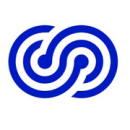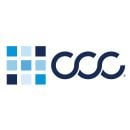Diversity, equity and inclusion initiatives are often framed as a corrective issue, reexamining an imperfect set of conditions to reduce biases and increase accountability in the workplace. What these proposals often neglect, however, are comprehensive fixes that lead to honest, transformative change. For example, some organizations may make bold promises about promoting DEI practices within their walls, but the composition of their workforce remains largely the same.
When leadership fails to produce tangible outcomes, the onus of increasing DEI in any given office falls on the individual contributors who populate their organizations. A commitment from leadership to invest time and energy into such solutions remains imperative; however, it’s equally important that employees hold their organizations accountable — particularly during the early stages.
“Individual contributors often serve as key drivers to advance and sustain an equitable and inclusive work culture,” said Taris Mullins, senior manager of culture, diversity and inclusion at fraud and identity solutions company TeleSign.
Jo Ann Tann agreed. “You don’t need to be a manager to make a difference,” the head of architecture, infrastructure and IT operations at City National Bank said, adding that the financial institution actively solicits input from team members on the topic. “From day one, employees are encouraged to speak up, get involved and think like an owner.”
It can be easy for individual contributors to feel removed from the policies and processes that actually move the needle when it comes to DEI. But it’s important to remember that companies are only as strong as their employees. That’s why Built In Los Angeles spoke with five local professionals to learn what they’re doing to make a difference when it comes to DEI — and the ways individual collaborators can serve as catalysts for turning statements into action.

What’s one concrete action an individual contributor can take to bring about meaningful change in their organization as it pertains to DEI?
Understand the diversity elements you personally bring to the organization. Diversity comes not only in the form of culture, race and gender, but also elements such as socioeconomic background, education level, geographic location, sexual orientation, thought and many other attributes. Each of us brings to the table a lifetime of experiences and knowledge. Each of us is different and adds value to the organization because of these differences.
Each of us is different and adds value to the organization because of these differences.”
How does leadership at your company encourage individual employees to be vocal and active in driving these initiatives forward?
Simply put, diversity, equity and inclusion should not be treated as an initiative. Instead, it should be a reflection of any employee within your organization. Once this has been established within the company, commitment and plans to make progress will come naturally. This is exactly how we talk about DEI at Enervee: It’s in our core and ingrained in our culture as new hires are made.
We bring our true selves to work, we share our backgrounds and we celebrate cultures. One cool way to do this is through music. Each week, we begin our companywide meeting by listening to music that could come from any continent, language or genre. Music truly transcends all boundaries! Anyone at the company can submit their favorite music and share their journey.
Enervee is a green technology company that helps shoppers make energy-smart buying decisions.
What’s one concrete action an individual contributor can take to bring about meaningful change in their organization as it pertains to diversity, equity and inclusion?
Tan: DEI takes on many forms. One form that comes up multiple times a day at City National Bank is diversity of thought from a wide range of contributors in meetings and conversations. The more varied the participants — ethnicity, background, roles and experiences — the richer the outcome — so encourage it! Solicit diverse input by being inclusive, listen to the input, learn and recognize contributions, and be equitable in its application.
For example, an individual contributor on the team recently volunteered to participate in interviewing applicants in order to have a voice in the hiring decisions — and to make sure we are getting a diverse set of candidates screened and interviewed.
Solicit diverse input by being inclusive, listen to the input, learn and recognize contributions, and be equitable in its application.”
How does leadership at your company encourage individual employees to be vocal and active in driving these initiatives forward?
Rao: We are fortunate to work for an organization that thrives in collaboration. Our technology and innovation leadership team is highly diverse and operates as one, which is the best demonstration of DEI. We are not afraid to offer varied thoughts and ideas. We welcome the opportunity to challenge each other and be uncomfortable, while still remaining polite and respectful. We value the partnership to agree to disagree. We foster the same culture and behavior across our teams.
This environment of collaboration results in dynamic employee-led resource groups, such as the Women In Tech group I lead in our technology and innovation division. Gender diversity fuels better business, builds stronger relationships and increases profitability. Through WIT, we offer networking and career-building experiences, share ideas, provide mentoring and volunteer opportunities, have an open dialogue about the unique challenges women face in today’s workplace, and are developing a Men as Allies program to foster collaboration.
What’s one concrete action an individual contributor can take to bring about meaningful change in their organization as it pertains to DEI?
One key action any person can leverage is assessing their workflows and identifying where DEI can be embedded in their processes and outcomes. An example of this comes from our talent acquisition team, where one of the individual contributors identified an opportunity to enhance the candidate experience by developing more equitable interview practices. Once they identified this gap, they collaborated with partners to create solutions and then scaled these across the enterprise, which has had a positive impact on the rigor of interviews and candidate experience with the organization.
One of the hallmarks of strong leadership is soliciting feedback to guide practice.”
How does leadership at your company encourage individual employees to be vocal and active in driving these initiatives forward?
Leadership matters, and ensuring executives are actively committed to advancing diversity, equity and inclusion requires that they invest time and energy to embed this across the organization. At TeleSign, our leadership is unabashedly committed to fostering an inclusive and equitable work culture comprising dynamic and diverse leaders across the world. From launching a culture transformation program that embeds DEI in its strategy to supporting the launch of employee resource groups to advancing a global culture and inclusion work group, the leadership at the organization understands that DEI must be integrated into the DNA of the enterprise.
Beyond this, the leaders at TeleSign also acknowledge where they may have opportunities to learn and grow in their journey and then actively seek out opportunities to deepen their understanding and put it into practice. Finally, one of the hallmarks of strong leadership is soliciting feedback to guide practice. TeleSign’s leadership remains hungry for feedback, because this directly informs their strategic actions, which impact not just our global workforce but the diverse clients and communities we serve.
Telesign is a machine learning company that protects web properties with dynamic mobile identity solutions.
What’s one concrete action an individual contributor can take to bring about meaningful change in their organization as it pertains to DEI?
If meaningful change is the goal, one concrete action is to become knowledgeable and active in the DEI strategy of your company. One way to do that is to either join or start an employee resource group and be actively engaged in the group. These groups can bring all levels of employees together to drive change in an organization. For instance, you might have an individual contributor leading a committee that has a director on it to foster mutual and equal exchange of ideas among all members.
An example that comes to mind is how one of our ERG members suggested an idea for how to celebrate a cultural holiday. This employee took the lead on bringing ideas and gathering other employees to assist in the activities to acknowledge the holiday, and the feedback was amazing. They brought their own cultural knowledge, and it created a higher level of cultural awareness for the organization.
If meaningful change is the goal, one concrete action is to become knowledgeable and active in the DEI strategy of your company.”
How does leadership at your company encourage individual employees to be vocal and active in driving these initiatives forward?
Our leadership regularly reminds employees of ways to be involved in DEI initiatives and gives employees the time and resources to be active. As a co-chair of our African-American Alliance Employee Resource Group, I’ve watched many individual employees get involved with the support of their leadership. When leaders allow employees time to participate in initiatives like our ERGs, it gives employees the confidence to be a driving force in our DEI strategy.
CCC Intelligent Solutions uses AI to power digital transformation for the insurance and automotive industries.
What’s one concrete action an individual contributor can take to bring about meaningful change in their organization as it pertains to diversity, equity and inclusion?
One can make a meaningful impact by becoming a member of an affinity group: taking the lead in company-organized activities to share mutual learning interests. They can also exchange ideas and possibilities that will keep this a welcoming environment for everyone, especially those from marginalized groups.
Because the training spectrum is so broad, it’s critical that we start with a strong foundation and work our way up.”
How does leadership at your company encourage individual employees to be vocal and active in driving forward these initiatives?
We’re working on a project to teach more people at Advertise Purple the fundamentals of diversity, equity and inclusion. We’ll also have meetings with senior leaders to see if any additional training is required to satisfy the organization’s needs.
Further training could, for example, focus on women’s empowerment or what microaggressions look like in the workplace. Because the training spectrum is so broad, it’s critical that we start with a strong foundation and work our way up.













